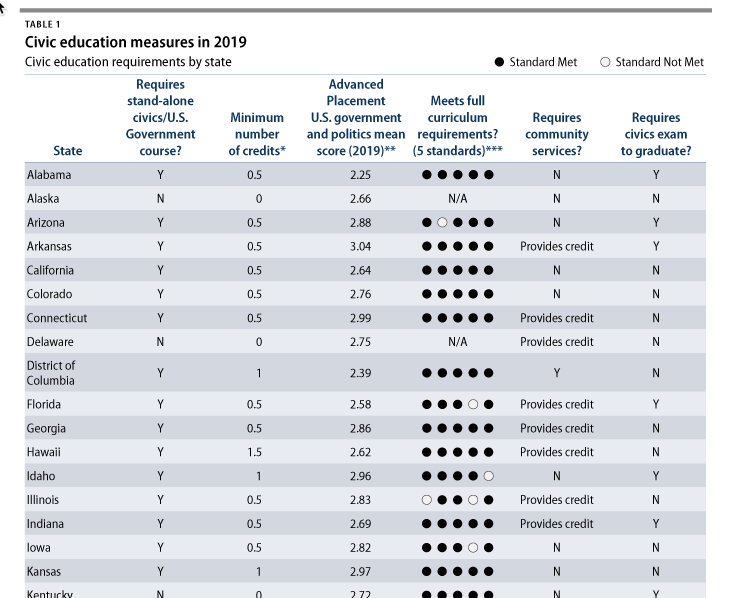The U.S. education field rightfully prioritizes preparing students for college, their career, and the future of work, but it’s also important for students to be prepared to participate in their democracy. Active and engaged citizens have multiple things in common, including, but not limited to, civic knowledge and literacy as well as civic engagement through activities such as volunteerism, social-emotional learning, and voter participation. Civics education in K-12 schools provides a critical opportunity to introduce these activities to and build knowledge for students. To adequately prepare students to participate in their democracy, this civics education needs to, at minimum, robustly cultivate civic knowledge, skills, and dispositions.
Unfortunately, civics education across the country has not always increased students’ civic knowledge and engagement, as federal and state funding for civics education has decreased over time. Although most states offer civics courses in middle school and high school—and some even mandate civics projects—since 1998, overall test scores on the National Assessment of Educational Progress (NAEP) civics exam have persistently shown that less than 25 percent of students are proficient in the subject. What’s more, gaps persist between the scores of Black and Hispanic students and those of their white peers as well as by English language learner, income, and disability status. These NAEP scores may be explained in part by white students’ disproportionate access and exposure to civics education and engagement opportunities compared with African American and Latinx students; higher incomes also lead to more opportunities for engagement. It’s important to address this disproportionality, as improved civics education can lead to greater civic engagement, including the increased likelihood of voting. Subsequently, once a person votes, they are likely to become habitual voters.
Read full article




